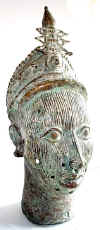 |
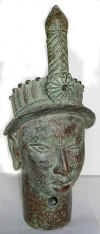 |
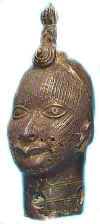 |
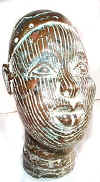 |
|
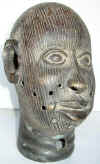 |
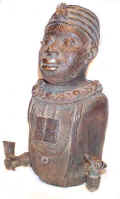 |
TRIBAL AFRICAN ART
IFE (ILE-IFE) style
Nigeria
In Yoruba mythology the city of Ile-Ife situated at southwest of
Nigeria is “the navel of the world,” the place where creation took place and the
tradition of kingship began. There it was that the gods Oduduwa and Obatala descended from
the heaven to create earth and its inhabitants. Oduduwa himself became the first ruler, oni,
of Ile-Ife. To this day Yoruba kings trace ancestry to Oduduwa. Of all the centers of
African art, there is none so remarkable for extraordinary accomplishments in many fields
of art as the ancient town of Ife, the ritual center of the great Yoruba tribe of western
Nigeria. Ife gave its name to this art. Ife art includes terra-cotta and bronze heads and
busts, stone sculpture, stools and religious pieces carved in quartz, monumental granite
monoliths, statues of humans and animals. Both the terra-cotta and bronze pieces belong to
a series that has been interpreted by some specialists as idealized portraits, and
occasionally a bust or a head has been identified as that of an oni or a dignitary. They date
from 12th to the 15th. Ife style is reminiscent of that of Benin, which flourished in the
16th century. The bronze heads were cast by the melted wax method; their
dimensions are near life-size and on some the whole facial area is covered with close
parallel lines which, it is thought, may represent body marks of a particular kind.
Surrounding the mouth and along the lower jaw, and also on top of the head, there are
irregularly placed holes. It is assumed that these were for the purpose of adorning the
head with some necklace-like ornament, marking the hair, beard and moustaches. Despite
the disappearance of the people responsible for the ancient Ife art, people living on its
territory continued to produce artwork inspired by the original masterpieces discovered
during archeological excavations.